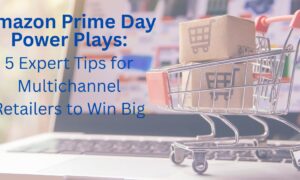The year 2020 saw massive growth in the ecommerce sector. Whether you’re hoping to bolster your ecommerce brand or enter this exciting space, it’s imperative to know the latest trends shaping ecommerce in 2021.
We spoke with ecommerce industry veteran Julian Fuchs about the breathless progress of last year and where he sees ecommerce heading.
1) Ecommerce Will Continue to Boom in 2021
Everyone knows that the pandemic forced consumers indoors and online, but the numbers are worth reviewing. Ecommerce reached an all-time high of 16.4% of total global retail sales in 2020. According to a Shopify global survey, 84% of consumers shopped online during the pandemic. Almost 150 million people shopped online for the first time in 2020.
“Some are worried that the explosive growth from 2019-2020 will necessitate a pull-back, a cooling off period,” says Fuchs. In addition, many in the industry worry that as vaccinations reach critical mass and lockdowns lift, consumers will abandon online shopping for in-store shopping. Fuchs is confident that, “as public health risks decrease, consumers will be shopping in-store more, but overall ecommerce will continue to increase. Once consumers experienced the convenience, the choice, the price, and so much more of ecommerce, they were hooked.”
In fact, Fuchs predicts with the increasing popularity of ecommerce in 2021, the market will become more crowded and competitive.
2) Omnichannel
Fuch believes that omnichannel is of utmost importance going into 2021. “To overcome the fierce competition of the continued increasing popularity of ecommerce, you need to prioritize a seamless and consistent experience across all channels and devices.” A Harvard Business Review survey revealed that 73% of shoppers used multiple channels when shopping online.
In addition to channels such as online marketplaces, social media, and retail, Fuchs urges special attention for mobile. “Across my brands, mobile use has been on the rise and looks to continue this year. Be careful, though, mobile users are less patient. For example, bounce rates on mobile are higher than desktop.”
“Omnichannel selling will go from being an edge in 2020 to a necessity in 2022,” says Fuchs. “Get this implemented while it’s still an advantage and before lacking it is a liability.”
3) Brands Experiment With New Avenues
Brands are increasingly having to compete with each other. Competition has accelerated digital ad growth, making the costs to acquire new customers surge. Fuchs says, “in early 2020 my customer acquisition costs plunged due to the pandemic, but as of today costs are near all-time highs, pre-pandemic.” In 2020, paid search and social media ad spend increased 26% and 25% respectively, while traditional out-of-home media fell 46%.
Brands are exploring new ways to interact with consumers. “We are looking at new, innovative, and more cost-effective methods of interacting with consumers,” says Fuchs. He points to voice commerce, a growth business with a forecast of 75% of U.S. households to own a smart speaker by 2025, as a great opportunity for ecommerce businesses. Fuchs says brands should look beyond Instagram, Facebook, Google, and Amazon. “There’s potential in new channels like Twitch, Discord, and Fortnite.”
4) Personalization
“Personalizing customer experience is baseline now,” says Fuchs, “but now personalization needs to be integrated into omnichannel selling.” Fuchs recalls having this experience several times recently: “I was interacting with a brand on my laptop, of course with a compelling personalized experience. Then, on the go, I switched to my mobile to continue, only to have a completely different templated and unpersonalized experience. This kind of thing is jarring and undermines a lot of the goodwill a brand spends personalizing user experience in the first place.”
With omnichannel becoming such an important part of ecommerce this year, he cautions that such inconsistencies must be avoided. Fuchs jokes that, “it’s almost better to not have a personalized experience if it’s only on one channel.”
5) Premium private label brands
Fuch reflects, “in the early days of direct-to-consumer (D2C) commerce, brands often pitched themselves as high-quality products at below retail prices. Consumers didn’t know D2C, weren’t familiar with the shopping model but were enticed by the value proposition. With D2C becoming widely accepted, consumers are increasingly comfortable with spending more money on nicer D2C products.” Online luxury sales grew from 12% in 2019 to 23% in 2020.
Premium private label brand sales are increasing, creating a new vertical in the D2C sector. Fuchs’ Everfit, which targets the high-end jump rope niche, eschews lower-cost alternatives by emphasizing premium components and a better shopping experience.


































